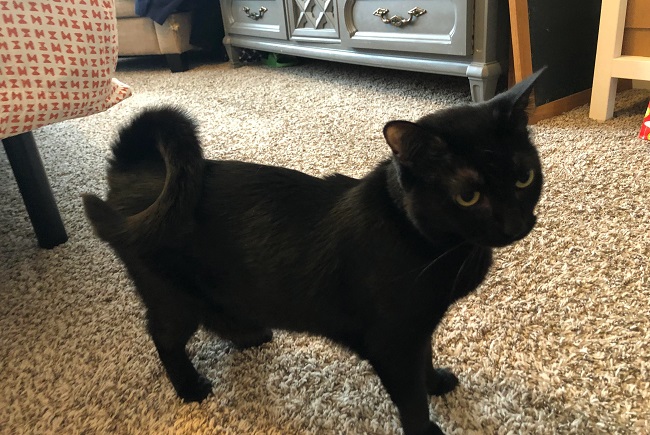Cats have fascinated humans with their mystery, elegance, and distinct characteristics for centuries. Among the many breeds available, curly tail cats stand out with their unique tail structure.
While commonly associated with dogs, notably the pug or shiba inu, a curled tail in cats is a feature that piques much interest among cat enthusiasts.
This article delves into the various curly tail cat breeds, explaining their history, genetics, behavior, and what makes each breed uniquely captivating.

What Causes a Cat’s Tail to Curl?
Before we delve into the specific breeds, it’s important to understand why some cats have curly tails. The curling trait is due to a genetic mutation that affects the structure of the tail’s bones and muscles.
Read Also:
This genetic anomaly is harmless and does not affect the cat’s health or ability to lead a normal life.
Top Breeds of Curly Tail Cats
Here are some top breeds of curly tail cats:
The American Curl
The American Curl, while not known for a curly tail, features another remarkable curl – in its ears. Discovered in California in the 1980s, this breed’s unique ear shape is caused by a genetic mutation.
Interestingly, kittens are born with straight ears which start to curl backward after a few days. Although they don’t possess a curled tail, their inclusion is essential due to their unique genetic curl characteristic.
The Manx Cat
A breed steeped in mystery and folklore is the Manx cat, originating from the Isle of Man. This breed can have no tail (rumpy), a short stub (stumpy), or a full tail that often curls over its back.
Apart from the unique tail, Manx cats are also known for their robust and rounded bodies, wide-set ears, and bright, expressive eyes.
Turkish Van and Turkish Angora
Lastly, we have the Turkish Van and Turkish Angora breeds. Both breeds occasionally exhibit a slight curl in their tails. Known for their luxurious and silky coats, these breeds’ tails are often as captivating as their striking eyes, one blue and one amber.
The Genetics Behind the Curl
The curl in the tails of these cat breeds is due to a dominant genetic mutation. This means that if one parent carries the gene for a curled tail, there’s a good chance some kittens in the litter will also have curled tails.
The gene does not generally cause any health issues and is not linked with spinal problems, making curly tail cats as agile and fit as their straight-tailed counterparts.
Caring for Curly Tail Cats
Despite their distinct tails, curly tail cats do not require any special care. Regular vet check-ups, a balanced diet, and plenty of exercises are standard for these breeds, just as with any other cats.
The Personality of Curly Tail Cats
Like all cats, curly tail cat breeds have their unique personalities. Generally, these cats are playful, intelligent, and affectionate, making them excellent companions.
They often form strong bonds with their human families and provide endless entertainment with their energetic antics.
Read Also:
Conclusion
Curly tail cats, with their unique tail structure and captivating history, offer a different charm from the usual feline breeds. From the historical Japanese Bobtail to the engaging Manx cat, these breeds embody a distinctive allure that makes them irresistible to cat enthusiasts.
Remember, while the breed can give you an idea of your cat’s potential personality and physical characteristics, each cat is unique and will develop its own personality traits over time.
Now that you know more about curly tail cats, you may be better equipped to decide if one of these delightful breeds could be the right addition to your household.
























